NEW
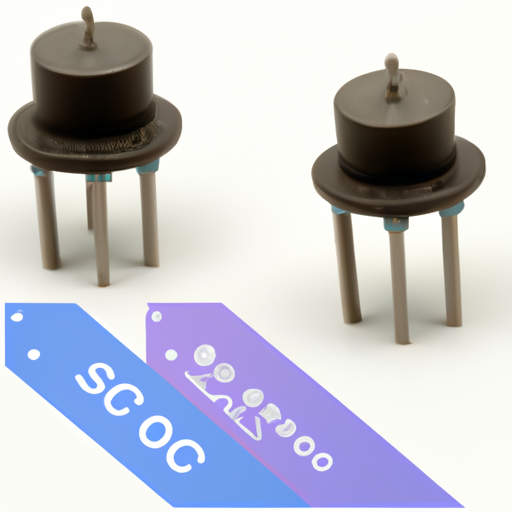
Overview of Crystal, Oscillator, and Resonator AccessoriesCrystal oscillators and resonators are fundamental components in electronic circuits, providing stable frequency references essential for timing and synchronization. The CFR-25JB-52-1R6 is a specific model of crystal oscillator that exemplifies the technology used in these components. Below, we will explore the core functional technologies, applications, and development cases related to crystal oscillators and resonators.
Core Functional Technologies1. Frequency Stability 2. Low Phase Noise 3. Temperature Compensation 4. Miniaturization 5. Integrated Solutions 1. Consumer Electronics2. Telecommunications3. Automotive4. Industrial Automation5. Medical Devices1. Prototyping and Testing2. Simulation Tools3. Collaboration with Suppliers4. Compliance and Standards5. Customization Application Development Cases Effective Development Strategies ConclusionCrystal oscillators, such as the CFR-25JB-52-1R6, play a vital role in modern electronics, providing essential timing and frequency stability across a wide range of applications. By leveraging advancements in technology and adopting effective development strategies, engineers can optimize the performance of their designs, ensuring reliability and efficiency in their products. As the demand for precision timing continues to grow, the importance of crystal oscillators and resonators will only increase in the future, driving innovation in various sectors.

Application Development in Resonators for CFR-25JB-52-1M6: Key Technologies and Success StoriesThe development of resonators, particularly in the context of components like the CFR-25JB-52-1M6 resistor, is a multifaceted endeavor that leverages cutting-edge technologies and methodologies. The CFR-25JB-52-1M6 is a precision resistor known for its stability and reliability in electronic circuits. Below, we explore the key technologies involved in resonator development and highlight notable success stories across various industries.
Key Technologies1. Material Science2. Microfabrication Techniques3. Simulation and Modeling4. Integrated Circuit (IC) Design5. Wireless Communication Technologies6. Quality Control and Testing1. Telecommunications2. Consumer Electronics3. Automotive Applications4. Medical Devices5. Industrial Automation Success Stories ConclusionThe development of resonators, particularly in relation to components like the CFR-25JB-52-1M6, represents a dynamic intersection of advanced materials, innovative fabrication techniques, and diverse applications across multiple industries. As technology continues to advance, the integration of resonators into new applications is expected to drive further improvements in performance and functionality. This evolution will continue to impact sectors such as telecommunications, consumer electronics, automotive, medical, and industrial automation, paving the way for future innovations and success stories.

Application Development in Programmable Oscillators for CFR-25JB-52-1K6: Key Technologies and Success StoriesProgrammable oscillators, such as the CFR-25JB-52-1K6, are essential components in a wide range of electronic applications, providing precise frequency generation and timing solutions. The development of applications utilizing programmable oscillators involves several key technologies and methodologies. Below is an overview of these technologies and notable success stories that illustrate their impact.
Key Technologies in Programmable Oscillator Development1. Digital Signal Processing (DSP):2. Microcontroller Integration:3. Phase-Locked Loops (PLLs):4. Software Development Kits (SDKs):5. User Interfaces:6. Low-Power Design:7. High-Frequency Performance:1. Telecommunications:2. Consumer Electronics:3. Automotive Applications:4. Medical Devices:5. Industrial Automation: Success Stories ConclusionThe development of applications using programmable oscillators like the CFR-25JB-52-1K6 leverages a combination of advanced technologies, including DSP, microcontroller integration, and low-power design. Success stories across various industries demonstrate the versatility and impact of these components, highlighting their role in enhancing performance, reliability, and user experience in modern electronic systems. As technology continues to evolve, the potential applications for programmable oscillators are likely to expand, driving innovation in numerous fields and contributing to the advancement of electronic design and functionality.
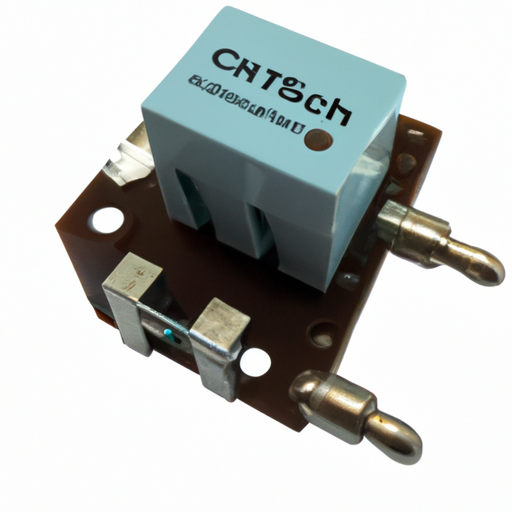
Overview of CFR-50JB-52-1K6 Switching Converter and SMPS TransformersThe CFR-50JB-52-1K6 is a specific model of a switching converter transformer, integral to switch-mode power supplies (SMPS). These transformers are essential for efficient energy conversion and regulation in various applications, from consumer electronics to industrial systems. Below, we delve into the core functional technologies, application development cases, and relevant resources that highlight the significance of switching converters and SMPS transformers.
Core Functional Technologies1. Switching Technology2. Magnetic Core Materials3. Isolation Techniques4. Thermal Management5. Control Circuits1. Consumer Electronics2. Industrial Power Supplies3. Telecommunications4. Renewable Energy Systems5. Electric Vehicles (EVs)1. Technical Papers2. Industry Standards3. Application Notes4. Webinars and Workshops5. Books Application Development Cases Articles and Resources ConclusionThe CFR-50JB-52-1K6 and similar SMPS transformers are pivotal in modern electronic systems, enabling efficient power conversion across a wide range of applications. By understanding the core technologies and exploring real-world application cases, engineers can design superior power supply solutions that meet the demands of contemporary electronic devices. For further exploration, engaging with technical papers, industry standards, and manufacturer resources will provide valuable insights into advancements in this field.

Overview of CFR-50JB-52-1M5 Power TransformersThe CFR-50JB-52-1M5 Power Transformer, while not extensively documented in public resources, represents a specific model within the broader category of power transformers. Understanding its core functional technologies and application development cases can provide insights into its role in modern electrical systems.
Core Functional Technologies of Power Transformers1. Magnetic Core Design2. Winding Configuration3. Cooling Systems4. Tap Changer Technology5. Protection and Monitoring Systems1. Renewable Energy Integration2. Smart Grids3. Industrial Applications4. Data Centers5. Electric Vehicle Charging Stations6. Urban Infrastructure Application Development Cases ConclusionThe CFR-50JB-52-1M5 Power Transformer exemplifies the critical role of power transformers in modern electrical systems. Advances in technology, such as improved materials, smart monitoring, and enhanced cooling systems, continue to enhance their performance and reliability. The diverse applications of power transformers, from renewable energy integration to urban infrastructure, underscore their importance in today's energy landscape. For specific articles or case studies related to the CFR-50JB-52-1M5 model, consulting manufacturer documentation, industry publications, or technical journals focused on power transformer technology and applications would provide more detailed insights.

Application Development in Current Sense Transformers for CFR-25JB-52-1K5: Key Technologies and Success StoriesCurrent Sense Transformers (CSTs), such as the CFR-25JB-52-1K5, are pivotal in measuring current in electrical circuits while ensuring electrical isolation. This capability is essential for safety and performance across various applications, particularly in power electronics and energy management systems. Below, we explore the key technologies that underpin the development of CSTs and highlight notable success stories that demonstrate their impact.
Key Technologies1. Magnetic Core Materials2. Winding Techniques3. Integrated Circuit (IC) Compatibility4. High-Frequency Operation5. Digital Signal Processing (DSP)6. Isolation Techniques7. Miniaturization1. Electric Vehicles (EVs)2. Renewable Energy Systems3. Industrial Automation4. Smart Grid Applications5. Consumer Electronics Success Stories ConclusionThe development and application of Current Sense Transformers like the CFR-25JB-52-1K5 are driven by advancements in materials, design techniques, and integration with digital technologies. Their successful implementation across various sectors—including electric vehicles, renewable energy, industrial automation, and consumer electronics—underscores their critical role in modern electrical systems. As technology continues to evolve, the significance of CSTs is expected to grow, paving the way for innovative applications and solutions that enhance efficiency, safety, and performance in electrical engineering.

Overview of CFR-50JB-52-1K5 Audio TransformersThe CFR-50JB-52-1K5 is a specialized audio transformer designed for a wide range of audio applications, including professional audio equipment, musical instruments, and consumer electronics. Audio transformers are essential components in audio systems, serving multiple functions such as isolating signals, matching impedance, and transforming audio signals to ensure optimal performance.
Core Functional Technology of Audio Transformers1. Impedance Matching 2. Signal Isolation 3. Signal Transformation 4. Frequency Response 5. Low Distortion 1. Microphone Preamplifiers 2. Guitar Amplifiers 3. Mixing Consoles 4. Home Audio Systems 5. Broadcasting Equipment Application Development Cases ConclusionThe CFR-50JB-52-1K5 audio transformer exemplifies the critical role that audio transformers play in modern audio technology. By providing essential functions such as impedance matching, signal isolation, and low distortion, these transformers significantly enhance the performance of various audio applications, from professional equipment to consumer electronics. A thorough understanding of the core functional technologies and application development cases of audio transformers can empower engineers and designers to create superior audio systems that meet the evolving demands of today's audio landscape.

Developing applications for accessories related to the CFR-50JB-52-1R5, a specific model of device or equipment, involves leveraging a variety of key technologies and methodologies. While the exact specifications of the CFR-50JB-52-1R5 are not detailed, we can explore the general landscape of application development for accessories in similar contexts, highlighting relevant technologies and notable success stories.
Key Technologies1. Embedded Systems Development2. Communication Protocols3. User Interface Development4. Cloud Integration5. Power Management6. Security1. Wearable Health Devices2. Smart Home Accessories3. Industrial IoT Solutions4. Automotive Accessories5. Consumer Electronics Success Stories ConclusionThe development of applications for accessories like the CFR-50JB-52-1R5 involves a multifaceted approach that combines embedded systems, communication technologies, user interface design, cloud integration, and security measures. By leveraging these technologies, developers can create innovative solutions that enhance the functionality and user experience of the accessory. The success stories across various industries illustrate the potential for impactful applications that meet consumer needs and drive market growth, paving the way for future advancements in accessory development.
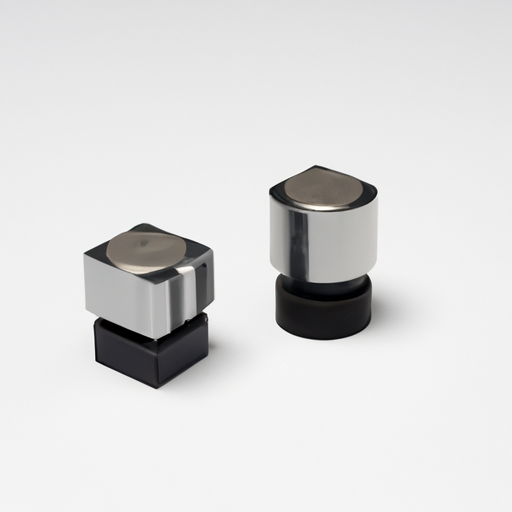
Overview of Joystick Potentiometers: CFR-25JB-52-1M3Joystick potentiometers, such as the CFR-25JB-52-1M3, are critical components in a wide range of applications, including gaming, robotics, and industrial machinery. This overview highlights the core functional technology, application development cases, and relevant resources that can aid in the effective use of joystick potentiometers.
Core Functional Technology1. Basic Operation2. Types of Joystick Potentiometers3. Electrical Characteristics4. Durability and Reliability1. Gaming Controllers2. Robotics3. Industrial Machinery4. Assistive Technology5. Flight Simulators1. Technical Papers2. Application Notes3. Case Studies4. Online Forums and Communities Application Development Cases Articles and Resources ConclusionJoystick potentiometers like the CFR-25JB-52-1M3 are versatile components that play a vital role in various applications, from gaming to industrial control systems. By understanding their core technology and exploring application development cases, engineers and developers can effectively leverage these components in their projects, leading to innovative solutions and enhanced user experiences.

Trimmer Potentiometers: Core Functional Technology and Application Development CasesTrimmer potentiometers, such as the CFR-25JB-52-1K3, are essential components in electronic design, providing adjustable resistance for fine-tuning circuit parameters. Below, we delve into the core functional technologies, application development cases, and relevant articles that underscore the effectiveness of trimmer potentiometers.
Core Functional Technology1. Basic Operation2. Types of Trimmer Potentiometers3. Key Specifications1. Audio Equipment2. Calibration of Sensors3. Power Supply Regulation4. Embedded Systems5. Test Equipment1. "Understanding Potentiometers: Types and Applications"2. "Designing with Trimmer Potentiometers"3. "Calibration Techniques for Sensors"4. "The Role of Trimmer Potentiometers in Audio Engineering"5. "Power Supply Design: Using Trimmer Potentiometers for Voltage Adjustment" Application Development Cases Articles and Resources ConclusionTrimmer potentiometers like the CFR-25JB-52-1K3 are vital for fine-tuning electronic circuits across a wide range of applications. Their ability to provide precise adjustments makes them indispensable in audio equipment, sensor calibration, power supply regulation, embedded systems, and test equipment. By understanding their core technology and application cases, engineers and designers can effectively leverage the benefits of trimmer potentiometers in their projects.

Application Development in Slide Potentiometers for CFR-50JB-52-1K3: Key Technologies and Success StoriesSlide potentiometers, such as the CFR-50JB-52-1K3, are integral components in a variety of applications due to their ability to provide variable resistance in a compact and user-friendly format. Their versatility makes them suitable for audio equipment, industrial controls, consumer electronics, and more. Below is an overview of the key technologies that underpin their functionality, along with notable success stories that highlight their application.
Key Technologies1. Resistive Material 2. Mechanical Design 3. Digital Integration 4. User Interface Design 5. Environmental Resistance 1. Audio Equipment 2. Consumer Electronics 3. Industrial Automation 4. Gaming Controllers 5. Medical Devices Success Stories ConclusionThe CFR-50JB-52-1K3 slide potentiometer exemplifies the versatility and reliability of slide potentiometers across various applications. With ongoing advancements in materials, design, and digital integration, these components continue to enhance user experience and functionality in multiple industries. As technology evolves, the potential for innovative applications of slide potentiometers is likely to expand, paving the way for new success stories in the future. The adaptability and performance of slide potentiometers will remain a key factor in their continued relevance in modern technology.
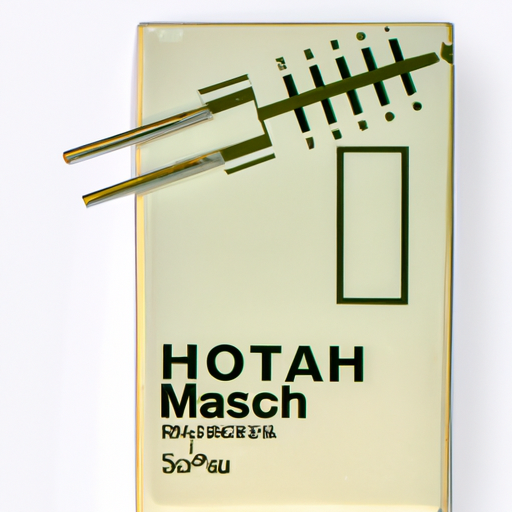
Core Functional Technology Articles on MM74HC373N Arrays and Signal Transformers 1. **Understanding the MM74HC373N: A High-Speed Octal Latch**
- **Overview**: The MM74HC373N is an octal transparent latch designed for high-speed applications, making it ideal for data storage and temporary data holding. It operates within a wide voltage range and is compatible with TTL logic levels, ensuring versatility in various electronic designs.
- **Key Features**:
- **Eight Latches**: Contains eight latches with a common enable input, allowing for simultaneous data handling.
- **High-Speed Operation**: Propagation delays as low as 15 ns enable rapid data processing, crucial for high-performance applications.
- **Low Power Consumption**: Its efficient design makes it suitable for battery-operated devices, enhancing energy efficiency.
- **Applications**: Commonly used in data storage systems, temporary data holding for microcontrollers, and interfacing between different logic families, facilitating seamless communication in mixed-technology environments. 2. **Signal Transformers: Essential Components for Signal Integrity**
- **Overview**: Signal transformers are vital for maintaining signal integrity across various applications, including telecommunications, audio systems, and data transmission. They help mitigate issues such as noise and signal degradation.
- **Key Features**:
- **Electrical Isolation**: Provides necessary isolation between circuits, protecting sensitive components from voltage spikes and interference.
- **Impedance Matching**: Ensures maximum power transfer and minimizes signal reflections, which is critical in high-frequency applications.
- **Frequency Response**: Designed to operate effectively over a specified frequency range, ensuring reliable performance in diverse applications.
- **Applications**: Widely used in audio equipment to prevent ground loops, in networking devices for data integrity, and in RF applications to enhance signal clarity. Application Development Cases 1. **Data Acquisition Systems Using MM74HC373N**
- **Case Study**: A data acquisition system was developed for environmental monitoring, utilizing the MM74HC373N to latch data from multiple sensors.
- **Implementation**:
- Sensors output data to the latches, which hold the data until it is read by a microcontroller, allowing for efficient data management.
- The transparent latch feature enables real-time data acquisition without data loss, ensuring that the system captures accurate readings.
- **Outcome**: The system demonstrated improved data reliability and reduced latency in data processing, leading to more timely and accurate environmental monitoring. 2. **Signal Isolation in Audio Systems with Signal Transformers**
- **Case Study**: An audio system was designed to eliminate ground loops and noise using signal transformers, enhancing overall audio quality.
- **Implementation**:
- Signal transformers were strategically placed between the audio source and the amplifier to isolate the two components, effectively preventing hum and noise from affecting audio clarity.
- This setup allowed for a cleaner signal path, minimizing interference from external sources.
- **Outcome**: The audio system achieved enhanced clarity and reduced interference, resulting in a significantly improved listening experience for users. 3. **Communication Systems Utilizing MM74HC373N and Signal Transformers**
- **Case Study**: A communication system was developed for a remote monitoring application, integrating both MM74HC373N and signal transformers to ensure reliable data transmission.
- **Implementation**:
- The MM74HC373N was employed to latch incoming data from various sensors, while signal transformers ensured signal integrity over long distances, addressing potential issues with signal degradation.
- This combination allowed for robust data transmission and reception, even in challenging environments.
- **Outcome**: The system achieved reliable communication with minimal data loss and high fidelity, making it suitable for critical monitoring applications. Conclusion
The MM74HC373N and signal transformers are integral components in modern electronic applications, providing essential functionalities for data handling and signal integrity. Their ability to efficiently manage data and maintain signal quality makes them indispensable across various fields, from consumer electronics to industrial systems. Understanding their functionalities and applications can lead to innovative solutions and advancements in technology development, paving the way for more efficient and reliable electronic systems.
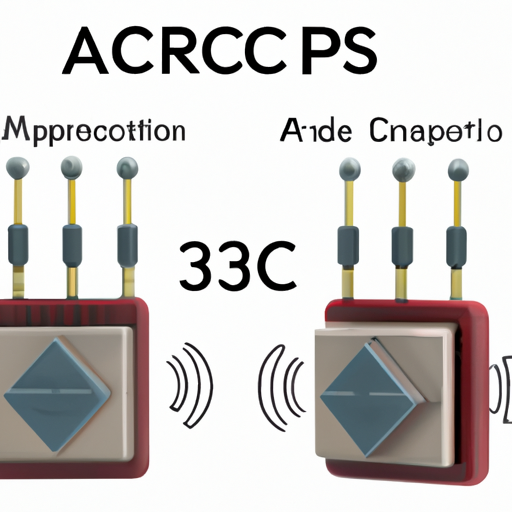
Application Development in Adjustable Inductors for CFR-25JB-52-1R2: Key Technologies and Success StoriesAdjustable inductors, such as the CFR-25JB-52-1R2, are integral components in a wide range of electronic applications, particularly in RF (radio frequency) circuits, power electronics, and signal processing. The development of applications utilizing adjustable inductors involves several key technologies and methodologies. Below are insights into these technologies and notable success stories.
Key Technologies1. Magnetic Core Materials2. Mechanical Adjustment Mechanisms3. Digital Control Systems4. Simulation and Modeling Tools5. Hybrid Technologies6. Miniaturization Techniques1. RF Communication Systems2. Power Supply Circuits3. Automotive Applications4. Consumer Electronics5. Telecommunications Success Stories ConclusionThe development of applications using adjustable inductors like the CFR-25JB-52-1R2 is propelled by advancements in materials, engineering, and digital technologies. Success stories across various industries underscore the versatility and significance of these components in enhancing performance, efficiency, and user experience in electronic systems. As technology continues to evolve, the role of adjustable inductors is expected to expand, paving the way for new innovations and applications in the future.

CFR-25JB-52-1M2 Fixed Inductors: Core Functional Technology and Application DevelopmentInductance Value: 25 µHInductance Value: 25 µHCurrent Rating: 1.2 ACurrent Rating: 1.2 ADC Resistance (DCR): Low resistance for efficient performanceDC Resistance (DCR): Low resistance for efficient performanceCore Material: Ferrite or iron powder, depending on the designCore Material: Ferrite or iron powder, depending on the designPackage Type: Typically surface mount or through-holePackage Type: Typically surface mount or through-holeTemperature Range: Suitable for various operating environmentsTemperature Range: Suitable for various operating environments Core Functional Technology1. Magnetic Core Design:2. Winding Techniques:3. Thermal Management:4. Shielding:1. Power Supply Filtering:2. RF Applications:3. Energy Storage in DC-DC Converters:4. Audio Equipment:5. Automotive Applications: Application Development Cases ConclusionThe CFR-25JB-52-1M2 fixed inductor represents significant advancements in inductor technology, delivering high performance across a diverse range of applications. Its design features, including low DCR, high inductance, and robust thermal stability, make it an ideal choice for modern electronic devices, from consumer electronics to automotive systems. As technology continues to evolve, the role of fixed inductors will remain crucial in ensuring efficient and reliable electronic performance, paving the way for innovative applications in the future.